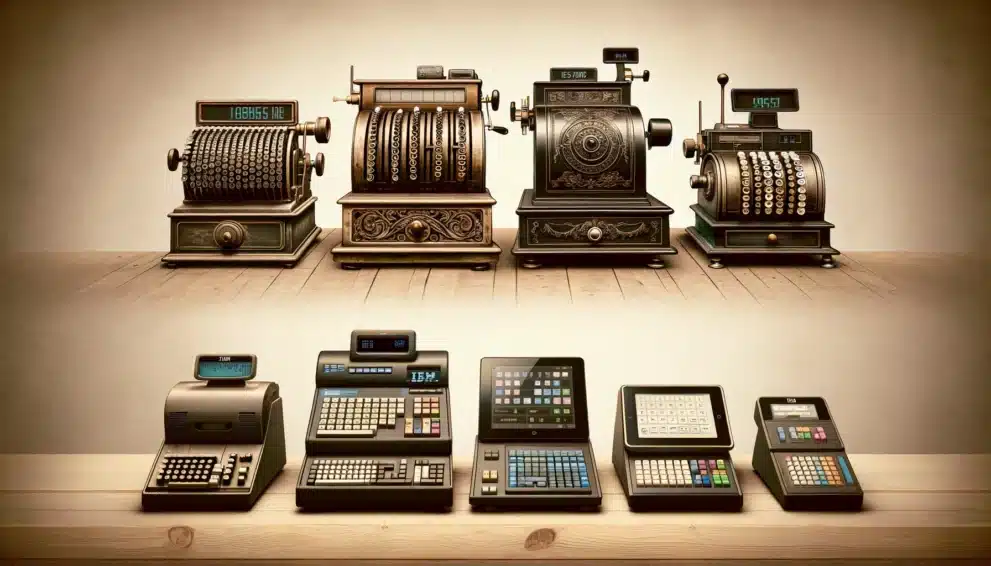
IBM made significant contributions to the evolution of cash registers and point-of-sale (POS) systems. In 1973, IBM developed the first computer-powered cash register, also known as the first networked POS system. This innovation allowed up to 128 registers to record all sales data in a central repository. The development stemmed from the needs of the supermarket industry in the 1960s, which sought a standard coding system to cover a wide range of products. IBM’s solution provided a sophisticated and efficient means of handling sales transactions, marking a notable advancement in retail technology.
IBM’s foray into cash registers marked a significant evolution in the retail industry, particularly with the introduction of computer-powered point-of-sale (POS) systems in the early 1970s. The company’s innovative approach transformed traditional cash registers into sophisticated systems capable of not just processing sales but also managing inventory, tracking customer purchases, and integrating sales data across multiple store locations. IBM’s POS systems, especially prominent in supermarket chains, were among the first to utilize universal product codes (UPCs) and barcode scanning technology, greatly enhancing the speed and accuracy of checkout processes. These systems were networked, allowing for real-time data collection and analysis, which provided invaluable insights into sales trends and inventory management. The technology continued to evolve, incorporating features like touch screens and customer-facing displays, reflecting IBM’s commitment to improving the retail experience through innovation and integration. This leap in technology fundamentally changed how retailers operated, setting new standards for efficiency, accuracy, and data-driven business management.
In the realm of cash registers and point-of-sale systems, IBM faced competition from several well-established companies, each bringing their own innovations and strengths to the market. Companies like NCR Corporation and Fujitsu were notable for their contributions to the development of early mechanical and later electronic cash registers. As technology progressed, more players like Toshiba TEC, Panasonic, and Casio entered the market, offering advanced POS solutions. These competitors pushed the boundaries in terms of hardware design, software integration, and customer service solutions, creating a dynamic and competitive environment. This competition drove continuous improvements and innovations, ensuring that retailers had access to a range of solutions tailored to their evolving needs.
IBM exited the cash register and point-of-sale (POS) business when it sold its Retail Store Solutions (RSS) business, which was responsible for retail point-of-service terminals, to Toshiba. The deal was announced for a reported value of $850 million. After the sale, IBM retained a nearly 20% stake in the new company formed by the deal but had plans to divest that stake over the following three years.
You can explore various channels to potentially purchase an IBM cash register, including antique shops, online marketplaces, and auctions specializing in vintage or collectible items. Antique stores often have vintage cash registers, while online platforms like eBay may have listings for both functional and collectible models. Additionally, auctions and estate sales can be fruitful for finding unique and historical cash registers. Engaging with collectors’ communities and reaching out to antique dealers might also lead to valuable leads and opportunities for acquiring an IBM cash register.




 Share
Share Tweet
Tweet Share
Share




Comment